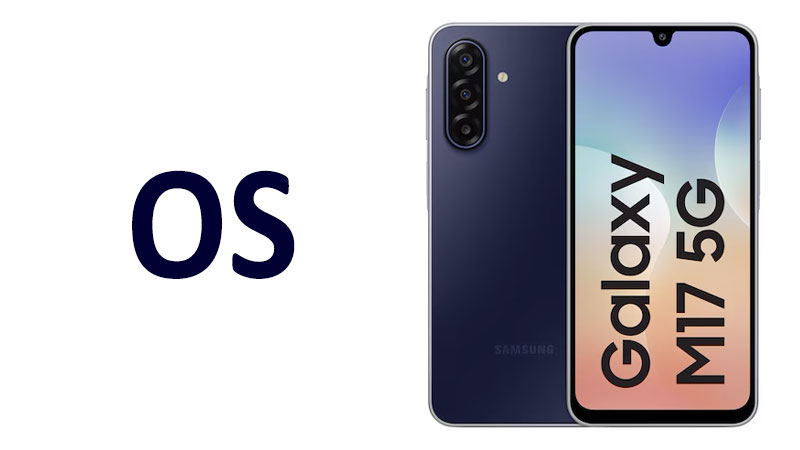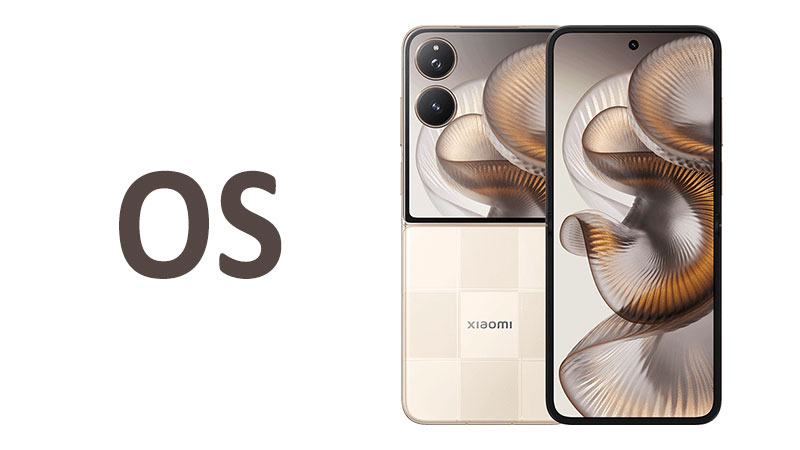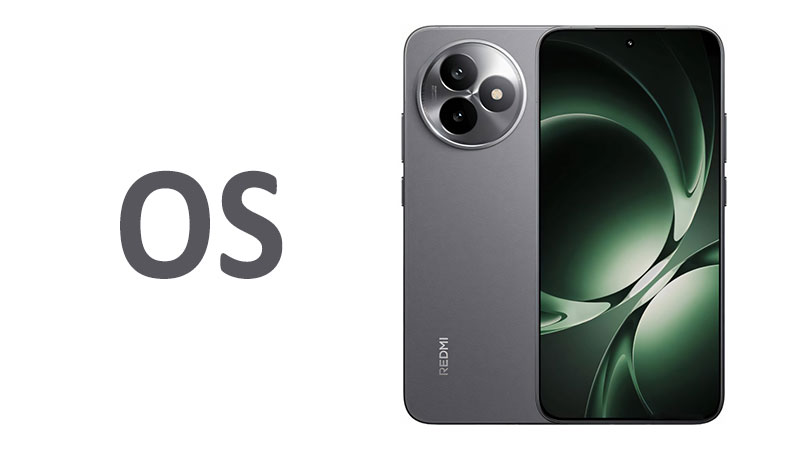The Samsung Galaxy M17 OS is the single most important factor defining this device’s future usability. This highly anticipated mid-range smartphone from Samsung launches with a powerful software combination. It features the foundational stability of Android 15 and the rich user experience of One UI 7. Understanding this potent software partnership is absolutely vital for technology enthusiasts and potential buyers alike. The operating system dictates the phone’s speed, security features, customization options, and crucial long-term value. This detailed, comprehensive article explores every facet of the Samsung Galaxy M17’s operating system. We will examine the deep integration of Android 15 with One UI 7. This extensive review includes specialized comparisons, detailed pros and cons, and essential guidance for any buyer.
Introduction to Android 15 and One UI 7 Integration
The operating system strategy for the Samsung Galaxy M17 OS prioritizes extreme longevity and sustained power efficiency. This is vital for the M-series. It offers users a strong blend of Google’s core platform updates and Samsung’s highly refined custom features. Android 15 provides a stable, modern, and highly secure operating core. It introduces fundamental system-level performance and efficiency improvements across the board. Meanwhile, One UI 7 adds a distinctive, feature-packed custom experience. This interface focuses heavily on seamless daily utility, aesthetic refinement, and deep ecosystem integration. This powerful dual-layer approach aims to deliver sustained performance and a highly personal user journey. The ultimate goal is to offer a feature-rich software experience with unparalleled long-term support.
Android 15: The Secure and Efficient Core
Android 15 introduces several major advancements to the modern mobile operating system landscape. These key upgrades prioritize user privacy, overall performance efficiency, and modern functionality. The resulting improvements benefit every application and system process running on the Samsung Galaxy M17. Consequently, these foundational changes are absolutely essential for the phone’s daily operational success. They ensure long-term stability and broad application compatibility.
Core Performance and Efficiency Upgrades
Android 15 is specifically engineered to significantly boost core device performance metrics. It features much deeper optimization for smart battery life management. This is a critical benefit for the Galaxy M17’s large battery. The system introduces more restrictive controls over background application processes. Therefore, the Galaxy M17 conserves power more effectively throughout a full day of intensive use. Furthermore, the overall memory management system receives a major design overhaul. This ensures consistently faster application loading times and fluid multitasking capabilities. Developers also gain access to a new suite of foundational APIs. These new tools facilitate richer, more adaptive app experiences for all users. This includes smoother handling of complex graphical elements. It also ensures faster data processing within all applications.
A key notable feature is the improved support for fluid display refresh rates. Android 15 optimizes the rendering pathways for the Galaxy M17’s display technology. This ensures a consistently smooth and lag-free visual experience during scrolling and system animation. Enhanced notification grouping is also a highly anticipated feature in this release. These crucial changes help to significantly declutter the notification shade. They effectively promote a calmer, much more focused digital user environment. The system also introduces finer-tuned haptics support across the board. This gives subtle, more expressive vibrational feedback for various touch interactions. The reduced thermal overhead is a significant benefit to performance consistency over time.
Advanced Security and User Privacy Features
Security remains a primary and non-negotiable focus in every major Android release cycle. Android 15 fully maintains this critical commitment with important new user protections. For instance, the Privacy Sandbox feature is now fully integrated into the system. This innovation allows for personalized advertising while completely protecting user data integrity. It marks a crucial evolution toward improved user confidentiality and trust.
A major addition is a hardened system execution environment. This provides powerful protection for sensitive user data. It effectively guards against highly sophisticated forms of malware and system intrusion. The system also provides enhanced control over the “Health Connect” platform. Users can exercise more precise and granular authority over their health data sharing permissions. Furthermore, indicators for camera and microphone access are now more obvious and prominent. They are also persistent, ensuring users always notice hardware usage by any application. Finally, the “Restricted Network” mode sees important functional enhancements. This feature allows users to limit network access for specific apps under severe security concerns. This provides an essential additional layer of network protection.
Specialized Comparison: Android 15 vs. Android 14
Android 15 represents a strong and necessary iterative improvement over the foundation of Android 14. The core focus shifts subtly toward efficiency and deep system hardening. Android 14 primarily focused on large-screen optimization for foldables and tablets. By contrast, Android 15 emphasizes battery efficiency and sustained system stability. Android 15 offers a superior memory handling system compared to Android 14. This is absolutely crucial for maintaining smooth, peak performance on the Galaxy M17. Moreover, the security features in Android 15 are more intuitive and user-friendly. This creates a smoother experience for all users prioritizing digital security. The updated APIs promise a much longer and more stable application life cycle on the new platform. This ensures the M17 stays current.
One UI 7: Samsung’s Refined Interface
One UI 7 is the customized, feature-rich interface that Samsung layers on top of Android 15. It represents the latest evolution of Samsung’s proprietary software skin. The main goal of One UI 7 is to enhance the device’s core capabilities. This is achieved by adding numerous productivity and integration features. It is a critical, visible component of the Samsung Galaxy M17 OS.
Interface Aesthetics and Customization
The visual experience in One UI 7 is characterized by clean lines, clear typography, and strong color consistency. Samsung has refined its design language to be more modern and universally accessible than previous versions. Animations are exceptionally smooth and highly responsive throughout the system interface. This is largely due to optimized rendering and scheduling pathways. The quick panel and notification shade have been further redesigned for faster access. They now offer a more organized and customizable layout for key settings.
Deep customization remains a core strength of One UI. Users can personalize the lock screen extensively with unique clock styles, functional widgets, and dynamic wallpapers. The comprehensive Material You integration is also robust. It offers sophisticated options for changing icon colors, system accents, and the overall color palette based on the chosen wallpaper. This allows users to truly make the Samsung Galaxy M17 OS their own unique device. The consistent visual appeal across the entire system significantly improves the user’s daily interaction and flow.
Unique Utility and Productivity Tools
One UI 7 includes several exclusive features designed to boost user productivity. The popular Edge Panel feature is one such notable inclusion. It provides quick access to frequently used applications and contacts via a side-swipe gesture. Enhanced Multi-Active Windows are also substantially improved in this version. Users can now resize and manage multiple applications in split-screen or pop-up view with greater ease. This enables superior multitasking than is standard in base Android.
Samsung also includes tools like the Samsung Wallet application. This feature provides a secure, all-in-one hub for payment cards, digital keys, and loyalty programs. Additionally, the integrated Device Care application is the phone’s central hub for maintenance. It handles system cleaning, security scans, and overall performance optimization. These powerful utility tools maximize the Galaxy M17’s practical daily use and efficiency.
Ecosystem Integration: The Galaxy Advantage
A major differentiating factor of One UI 7 is its focus on the expansive Samsung Galaxy ecosystem. The integration features are substantially enhanced in this version. Users can seamlessly connect the Galaxy M17 with Galaxy Buds, Galaxy Watch, and Samsung tablets. For instance, the Continuous App Experience allows users to switch a task, like browsing, from the phone to a connected tablet.
Quick Share is another crucial component of the One UI ecosystem. This feature enables high-speed, secure file transfers between nearby Samsung devices. The integrated SmartThings application also provides centralized control over all compatible smart home devices. This deep ecosystem synergy provides a huge advantage. It creates a powerful and highly unified environment for Samsung users.
Specialized Comparison: One UI 7 vs. One UI 6 (Previous Generation)
The transition to One UI 7 focuses heavily on visual fluidity and performance stability. Older versions, such as One UI 6, sometimes felt slightly heavier on system resources. One UI 7 successfully addresses these minor performance issues. It achieves this by being more lightweight and relying heavily on Android 15’s improved memory core.
One UI 7 offers a much cleaner, more refined, and visibly smoother user experience. Its reliance on the optimized Android 15 core is superior in overall resource efficiency. Furthermore, the accessibility features in One UI 7 have been significantly improved. The visual aesthetics have also been subtly modernized. This makes the Samsung Galaxy M17 OS much more polished compared to previous generation Samsung M-series models. The interface feels faster and more cohesive for daily use.
Software Longevity: The Six-Year Promise
The Samsung Galaxy M17 OS sets a new benchmark for software commitment in the mid-range segment. Samsung promises up to 6 major Android upgrades for this specific device. This policy is unprecedented and dramatically alters the device’s value proposition.
Unprecedented Upgrade Policy
The commitment of up to 6 major Android upgrades means the Samsung Galaxy M17 will receive updates up to Android 21. This ensures that the phone remains current, functional, and secure for many years to come. This longevity extends far beyond the typical support window of most competitors in this price category. It provides incredible value and future-proofing for the user. Furthermore, Samsung also promises a similar extended period of security patches. This maintains the phone’s data integrity and defense against emerging threats throughout its entire life cycle.
Financial and Environmental Impact
This extended support policy carries significant benefits for both the user’s wallet and the environment. Users can confidently hold onto the Galaxy M17 for a much longer period. This reduces the need for frequent hardware upgrades significantly. It translates directly into lower long-term ownership costs. Environmentally, the policy strongly supports sustainable practices. It reduces electronic waste by extending the usable lifespan of the device hardware. This focus on longevity is a major differentiator for the Samsung Galaxy M17 OS. It appeals strongly to budget-conscious and environmentally aware consumers.
Specialized Comparison: Samsung Longevity vs. Competitors
The commitment of 6 major Android upgrades for the Galaxy M17 is almost unmatched in this sector. Google Pixel devices currently offer strong support, but often fall short of this six-year mark. Other major Android manufacturers typically offer 2 to 4 years of major OS upgrades for their mid-range phones. Samsung’s promise essentially future-proofs the M17. It immediately gives the Galaxy M17 a decisive competitive edge in the mid-range market segment. No other competitor currently offers this level of assured software longevity at this affordable price point. This makes the M17 a smart investment.
Synergistic Performance and Daily Efficiency
The combination of Android 15’s core efficiency and One UI 7’s optimized structure creates powerful software synergy. This synergy results in an operating system that is incredibly fast, efficient, and robust. This collaboration greatly benefits key areas like massive battery life, multitasking, and overall daily responsiveness.
Battery Optimization Through Software Synergy
Battery life is a primary beneficiary of this advanced software partnership. Android 15 improves power management at the fundamental system level. It places necessary, tight restrictions on background app activity. One UI 7 then utilizes its own smart battery management features. This includes various customizable power-saving modes. The combined approach offers truly exceptional, multi-day endurance for the Galaxy M17. The system intelligently learns user usage patterns. It then adjusts background resource allocation accordingly. This minimizes unnecessary battery drain significantly. This synergy maximizes the M-series’ signature large battery.
System Responsiveness and Multitasking
The overall responsiveness of the Galaxy M17 OS is a major strength. Android 15’s memory management prevents system slowdowns efficiently. One UI 7 then layers its own scheduling algorithms on top. These algorithms prioritize foreground applications perfectly. The result is lightning-fast app launch times and seamless switching between various applications. Even complex multitasking using the Multi-Active Window feature remains reliably smooth. The reduced software overhead contributes directly to this sustained, high-level performance consistency.
Software for High-Capacity Battery Management
The specific software tools designed for the M17’s large battery are crucial. One UI 7 includes specific optimization profiles for the M-series. These profiles aggressively manage inactive apps. They place non-essential processes into a deep sleep state. This drastically reduces the ambient power consumption. Furthermore, the battery statistics screen provides detailed, easy-to-read consumption analysis. Users can quickly identify and curb power-hungry applications. This intelligent software management is key to delivering the phone’s promised marathon battery performance. It ensures the hardware and software work together perfectly.
Buyer’s Guide: Pros, Cons, and Key Considerations
The software experience of the Samsung Galaxy M17 OS is arguably its most compelling feature. It appeals to a vast demographic of users, especially those prioritizing battery life. Potential buyers must carefully weigh the system’s strengths against its minor potential tradeoffs.
Pros of the Samsung Galaxy M17 OS
The benefits of combining Android 15 with the powerful One UI 7 features are significant.
- Unrivaled Longevity: The promise of up to 6 major Android upgrades provides massive long-term value and security.
- Extreme Efficiency: Android 15 and One UI 7 work together to maximize the M17’s massive battery capacity.
- Deep Ecosystem: Seamless integration with Samsung’s extensive range of Galaxy devices enhances overall utility.
- Feature Density: One UI 7 offers a vast array of unique and useful productivity tools like the Edge Panel.
- High Security Base: Android 15 provides a robust and modern foundation for data protection and user privacy.
Cons and Potential Tradeoffs
The highly feature-rich approach of One UI 7 does introduce some minor system drawbacks.
- Initial Size: One UI is a feature-heavy interface. This means the initial software installation size is larger than stock Android.
- Learning Curve: Users migrating from a clean, stock Android interface might need time to adjust to the numerous features and settings in One UI 7.
- Update Delay: Although the number of updates is excellent, the initial rollout of a new major Android version can take longer than on Google Pixel phones.
Important Points a Buyer Should Know
A reader considering the Samsung Galaxy M17 must understand the software implications clearly.
First, focus on the six-year promise. This commitment is the primary reason to choose this device over similarly priced competitors. It guarantees future compatibility and security for years.
Second, embrace the ecosystem. The phone’s full potential is unlocked when paired with other Samsung devices. Users already invested in the Galaxy ecosystem will find the transition seamless and beneficial.
Third, manage storage carefully. Due to the feature density and large initial software size, users should opt for a model with sufficient internal storage capacity. This prevents future storage headaches efficiently.
Finally, appreciate the polished experience. One UI 7 offers a highly refined and mature user interface. It ensures a premium feel that often exceeds the expectations for a mid-range device. The software base is reliably fast and robust. The battery optimizations are the key software feature here.
Conclusion
The Samsung Galaxy M17 OS, built on the stable foundation of Android 15 and layered with the sophisticated One UI 7, presents an exceptionally strong value proposition. It successfully balances the cutting-edge security and performance of Google’s core platform with Samsung’s commitment to utility and ecosystem integration. The performance optimizations, refined interface, and extensive features make this a compelling choice for power users. However, the device’s standout feature is the unparalleled commitment to up to 6 major Android upgrades. This guarantees longevity, minimizes e-waste, and maximizes the user’s financial investment. The Samsung Galaxy M17 offers a fast, secure, and future-proof mobile experience. This superior software commitment, combined with the focus on battery efficiency, makes the Galaxy M17 a decisive market leader in the mid-range segment.
Frequently Asked Questions (FAQ)
1. What is the core Android version the Samsung Galaxy M17 ships with?
The Samsung Galaxy M17 launches with the latest stable foundational software. This is Google’s Android 15.
2. How many major Android operating system upgrades will the M17 receive?
Samsung has committed to providing up to 6 major Android operating system upgrades for the Galaxy M17.
3. What is the name of Samsung’s custom interface layer on this phone?
The custom user interface layer on the Galaxy M17 is the highly refined and feature-rich One UI 7.
4. Does the Galaxy M17 OS have special battery-saving software?
Yes, One UI 7 includes specific battery optimization profiles. These maximize the M17’s large battery capacity by aggressively managing background apps.
5. Does the phone support seamless switching with other Samsung devices?
Yes, One UI 7 enhances ecosystem integration features. This allows seamless switching with devices like Galaxy Watch and Galaxy Buds.



